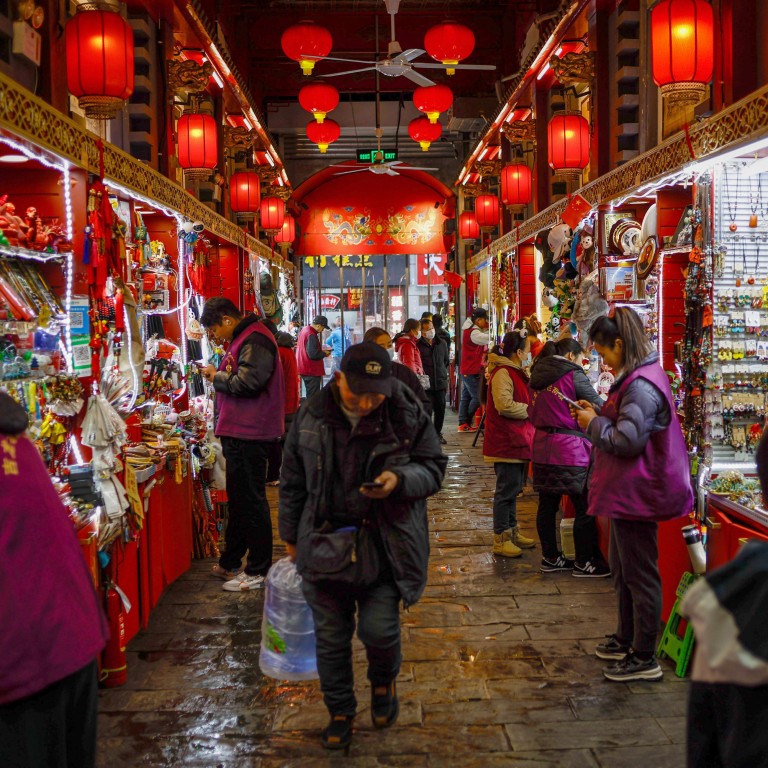
China’s consumer prices mark steepest fall in 3 years as post-Covid rebound falters
- Downward pressures on energy and food prices cited by Beijing as consumer price index falls 0.5 per cent year on year in November
- President Xi Jinping has warned that economic recovery is still ‘at a critical stage’
China’s deflationary pressure continued to intensify as November consumer prices registered a much bigger drop than in October, marking the steepest fall in three years.
The year-on-year CPI decline was the steepest since November 2020, as domestic demand struggles to pick up.
NBS chief statistician Dong Lijuan attributed the decline to downward pressures on energy and food prices.
Year-on-year core inflation, excluding food and fuel prices, remained at 0.6 per cent, the same as October, highlighting difficulties in kick-starting China’s post-Covid recovery.
“Deflationary pressure has heightened as domestic demand remains weak. This highlights the importance of more supportive fiscal policy to boost domestic demand and avoid a further downward spiral in prices,” Zhang Zhiwei, president and chief economist at Pinpoint Asset Management, said.
China’s producer price index (PPI), which measures costs for goods at the factory gate, fell for the 14th straight month, down by 3 per cent year on year in November after a 2.6 per cent drop in October.
On a month-on-month basis, the PPI dipped by 0.3 per cent, after a flat reading in October.
Dong said the drop was a result of falling fuel prices and weak demand for industrial products.
China’s economy has been grappling with many difficulties internally and externally despite lifting all pandemic restrictions earlier this year. These include sluggish domestic consumption, local government debts risks, an ailing property sector and shaky exports as global growth slows down.
A slew of measures rolled out to stabilise the Chinese economy has so far failed to halt the downward trend.
Moody’s, however, kept its rating for China’s sovereign bonds unchanged at A1, meaning they were still of upper-medium investment grade.
Sustained export growth in ‘doubt’: 5 takeaways from China’s trade data
He also called for efforts to stabilise economic fundamentals to help attract foreign capital and boost trade growth, and for efforts to counter negative narratives about the Chinese economy, according to state news agency Xinhua.
China’s Communist Party signals further delay to key economic session
Pledging to continue to implement proactive fiscal policies and prudent monetary policies, the Politburo said economic recovery was on the right track and consolidating it would be a priority in the coming year.
With the recent strength in China’s exports at least partly fuelled by firms slashing prices to gain market share, analysts at Capital Economics said they did not expect the resilience to last.


